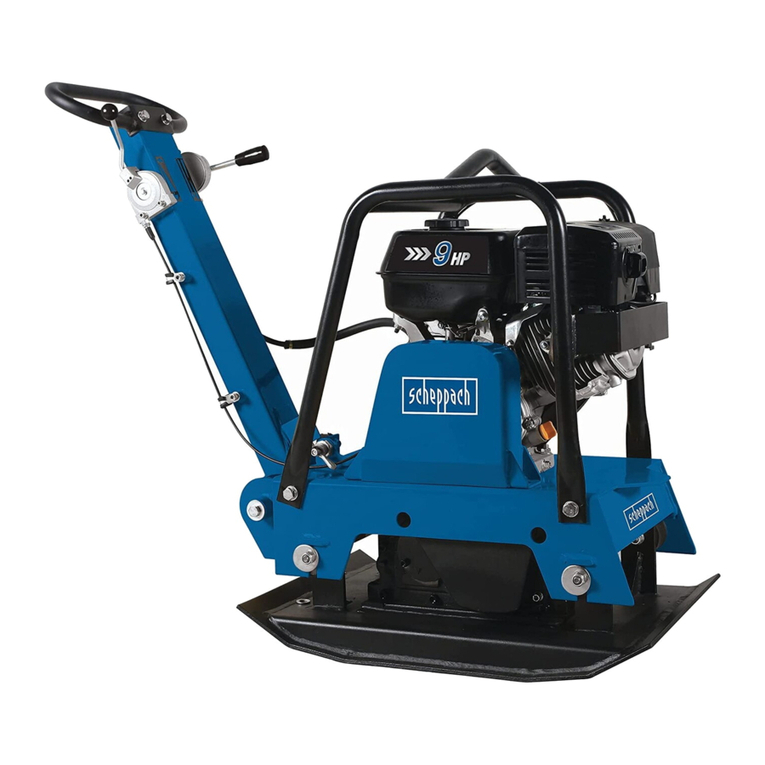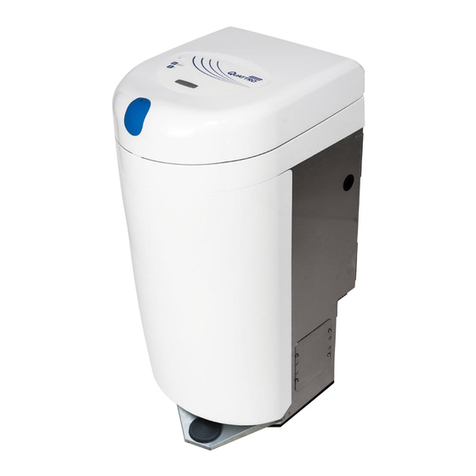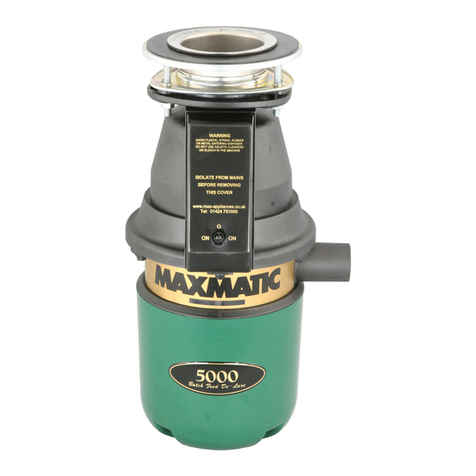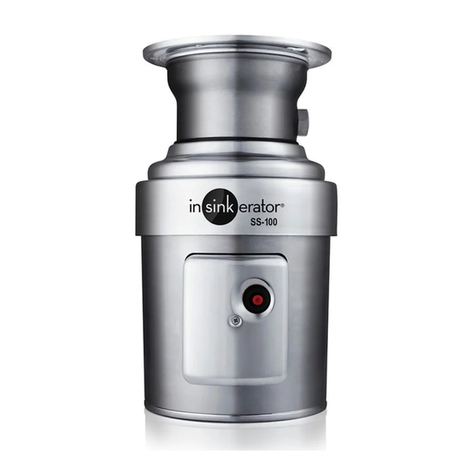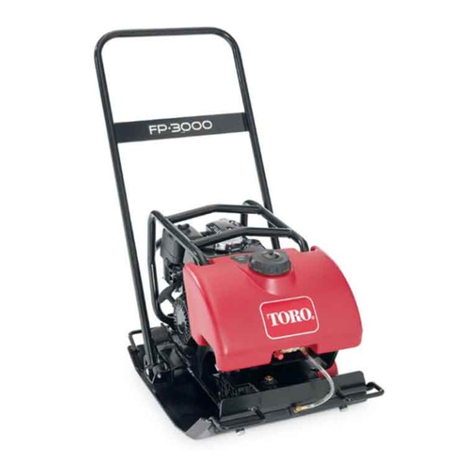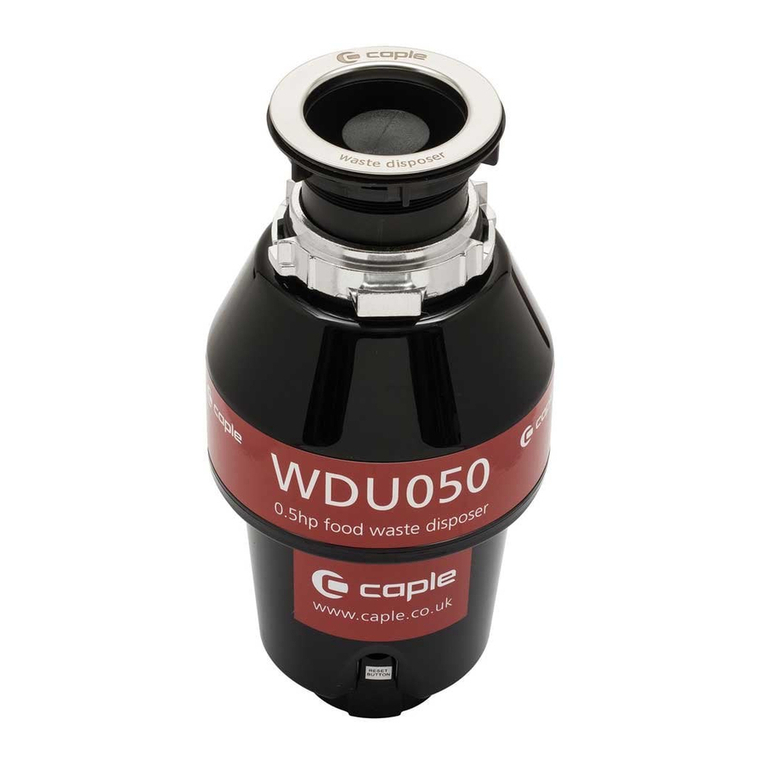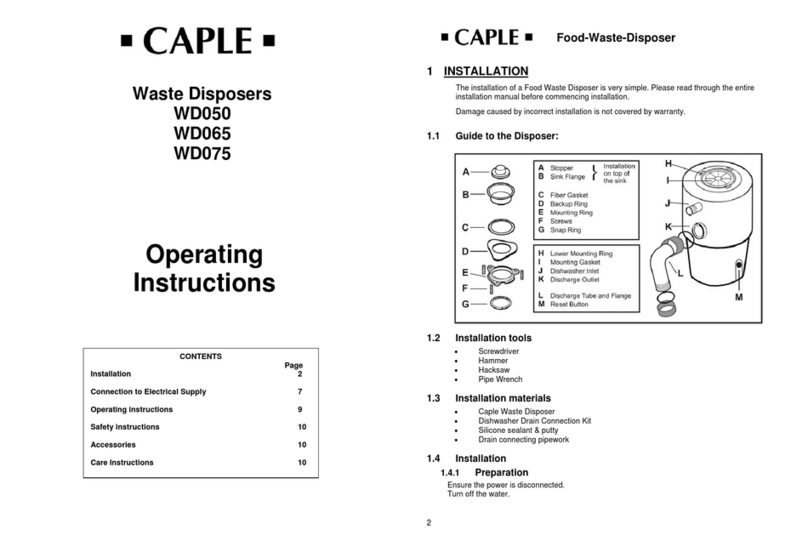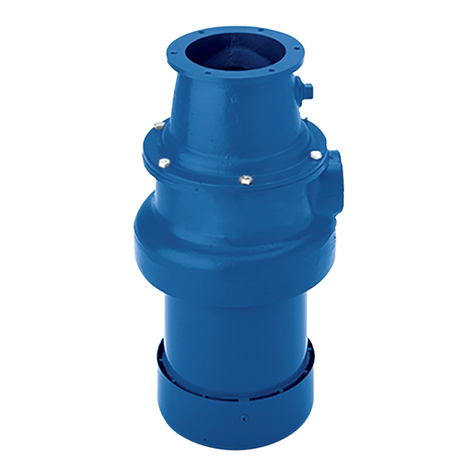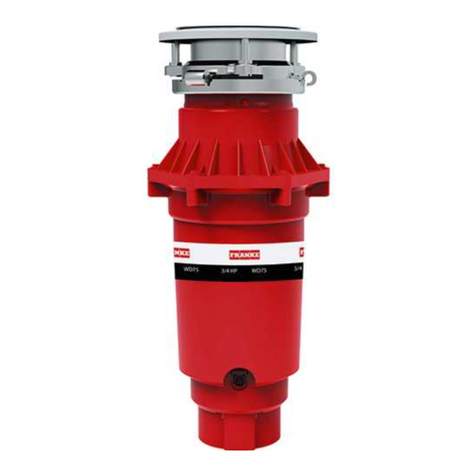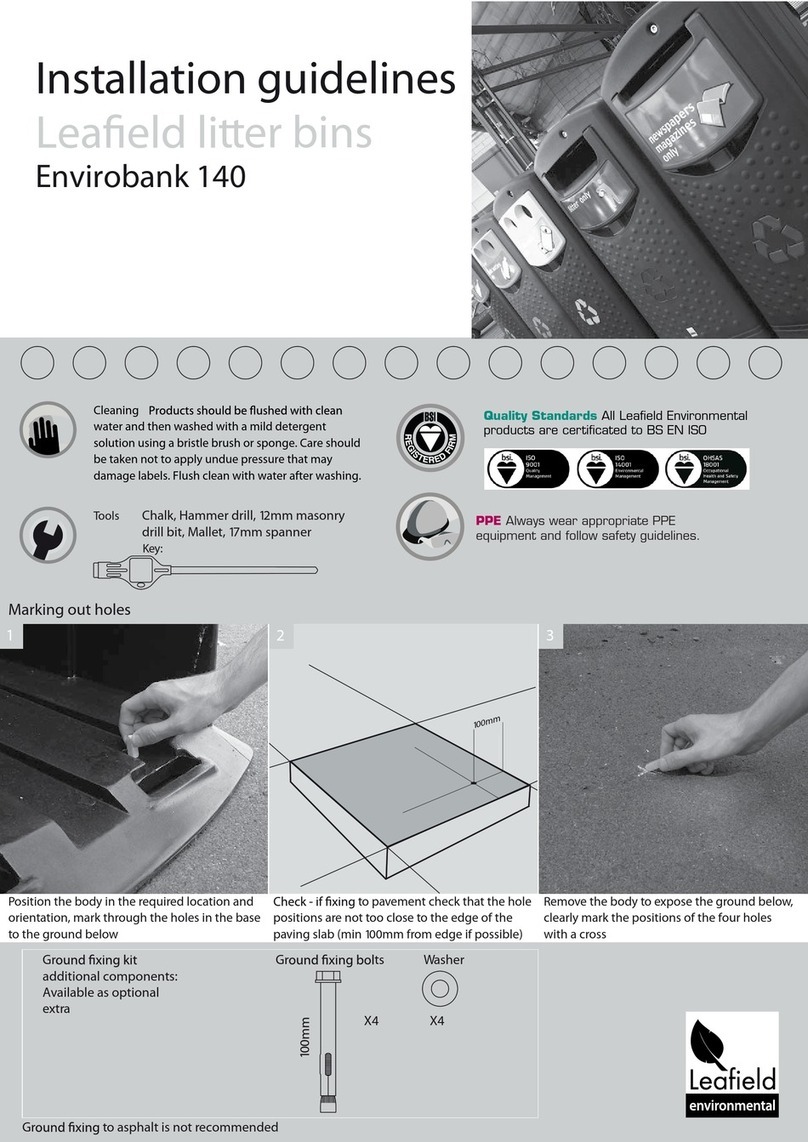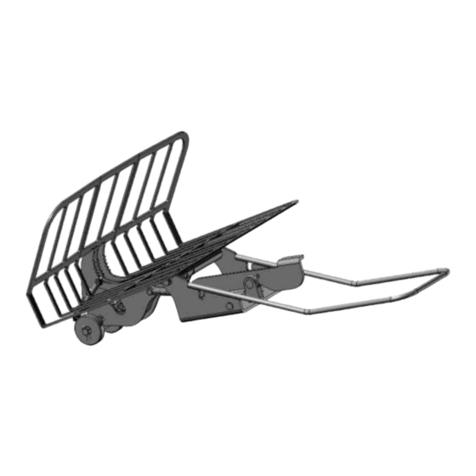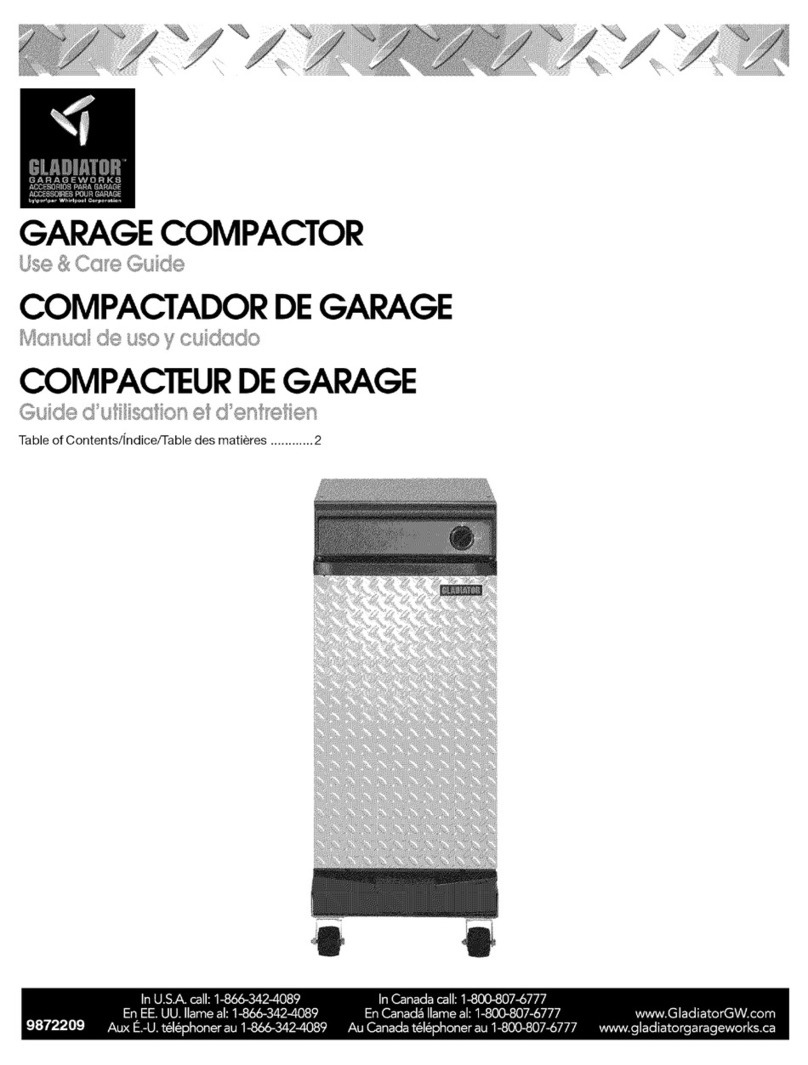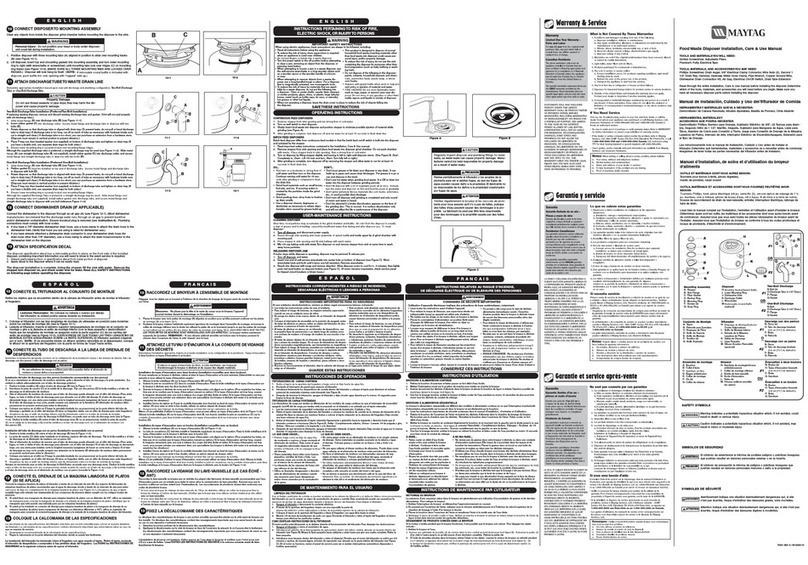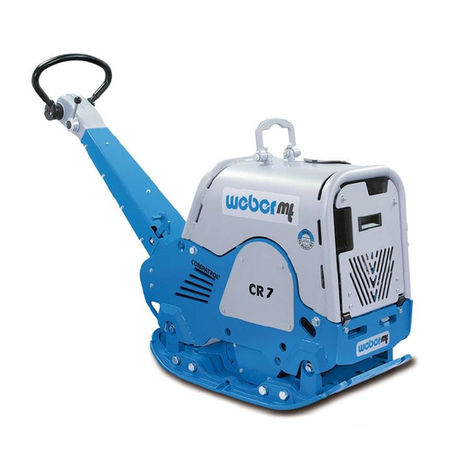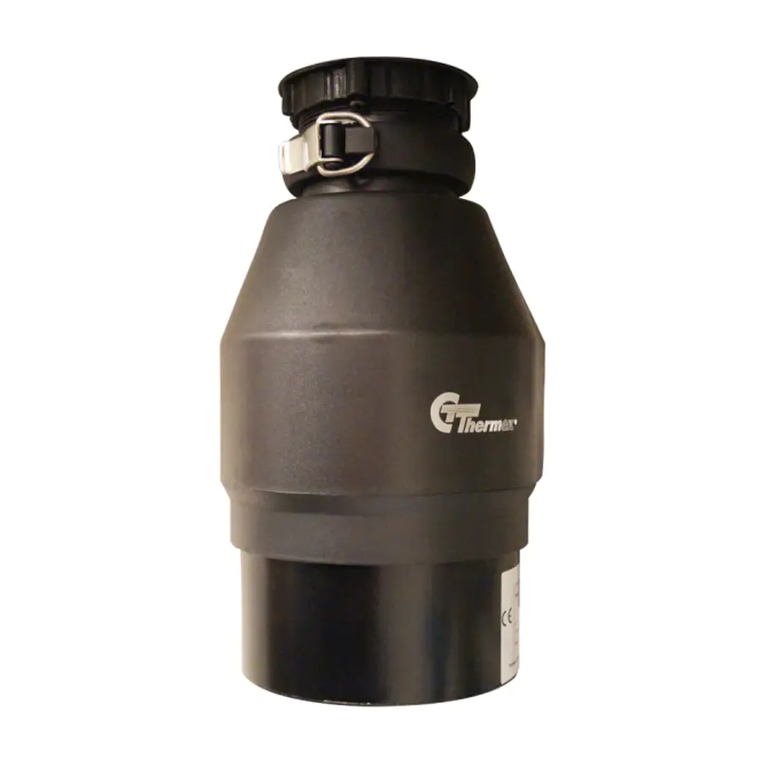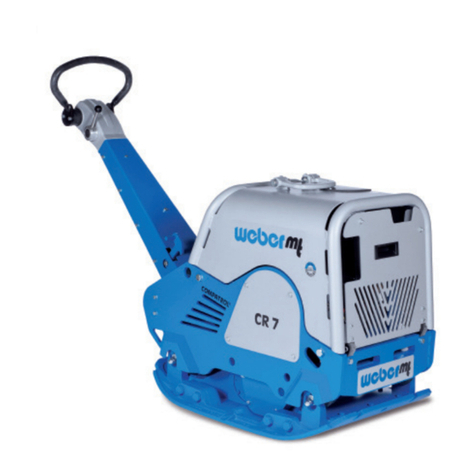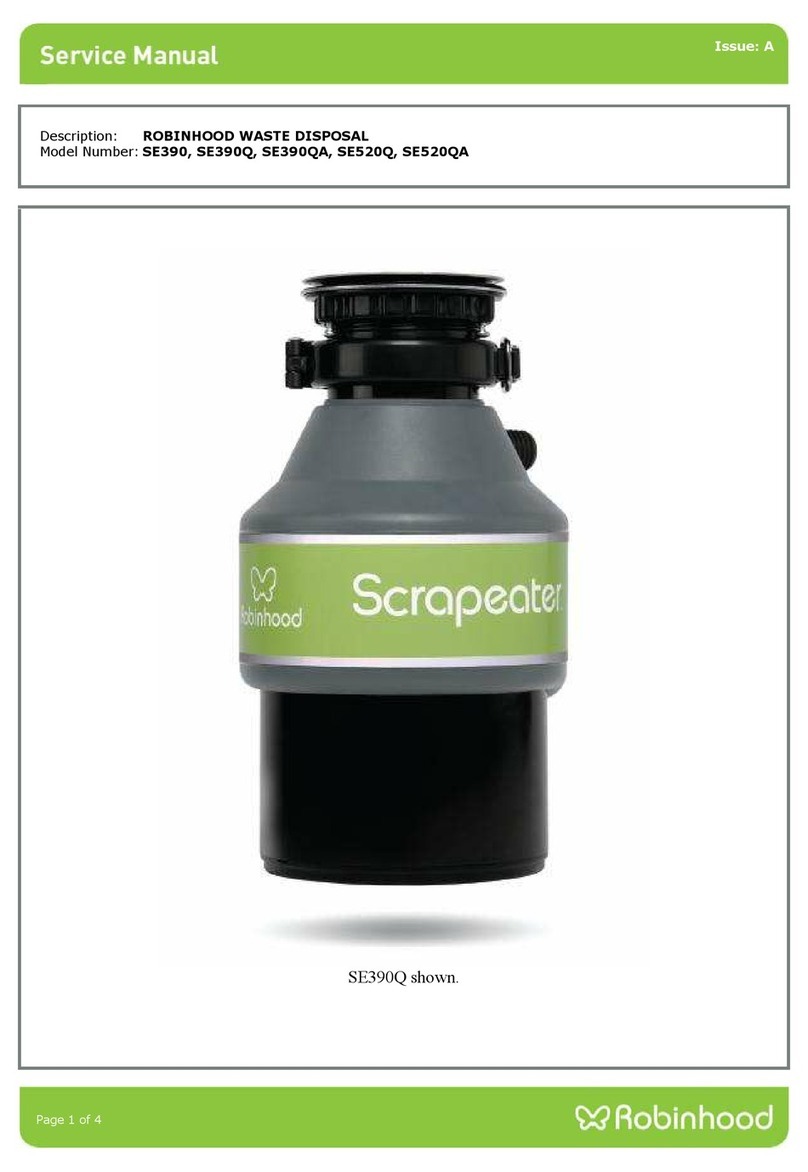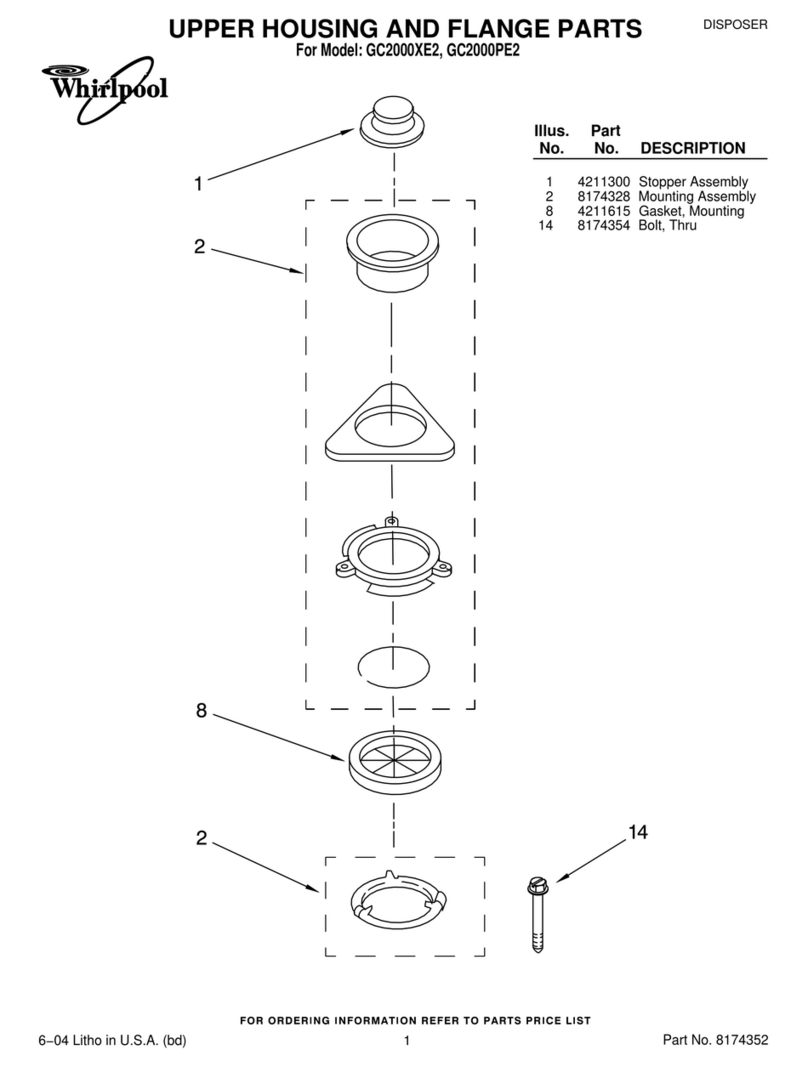
Instruction manual WDU1258Please keep this instruction manual for future reference
»Raise mount ring toward top of sink flange. Remove
cushion mount. Remove mount ring. You may want
to practice installing the cushion mount at this point
before you are under the sink. See paragraph H. Also
see the “Important Notice: Cushion Mount Detail.”
»Unscrew support ring from sink flange and remove fibre
gasket. You are now left with sink flange and
rubber gasket.
»The rubber gasket is used instead of plumbers putty
or silicone with stainless steel sinks. Other sinks may
require putty or silicone.
»If no putty or silicone is used, insert sink flange through
rubber gasket into sink opening. Do not rotate sink
flange once it is seated.
»If you use putty or silicone instead of the gasket, form
a ring around underside of sink flange (see 3D). Insert
flange into sink opening, press down hard to squeeze
out excess putty or silicone (see 3B). From under sink,
trim off excess putty or silicone flush with bottom edge
of sink opening.
»From underneath sink, slip fibre gasket onto exposed
sink flange. With arrows pointing up, screw support ring
onto the sink flange, hand tighten until the sink flange
will not move. At this point you may want to insert
stopper in sink and fill with water to check sink flange
seal and ensure there are no leaks.
»Place mount ring over sink flange and hold in place
while installing cushion mount (large side down) so
the groove on the inside of cushion mount fits over lip
on sink flange, similar to putting the lid on a plastic
container (see 3E, 3F & 3G). Please read important
notice below.
»The disposer must be installed so that the reset button
is readily accessible
TOP OF SINK FLANGE
FIBER
GASKET
RUBBER
GASKET
SUPPORT
RING
SINK
FLANGE
SINK
BOTTOM
BEAD OF
CUSHION
MOUNT
OPEN AREA, NO
OBSTRUCTION
MOUNT RING
SHOULD BE FREE TO
MOVE UP & DOWN
SINK
FLANGE
SINK
SCREWS
DISCHARGE ELBOW
RUBBER SINK
FLANGE GASKET (OR
PUTTY)
FIBER GASKET
SUPPORT RING
(NOTE ARROWS
INDICATING UP)
REMOVABLE
*SPLASH GUARD
MOUNT RING
TIGHTENING EARS
CUSHION MOUNT
GROOVE
ELBOW GASKET
DISHWASHER
INLET
ELBOW
FLANGE
HOPPER
RESET BUTTON
(FRONT)
* STOPPER
3B
3B
3F
3B
3C
